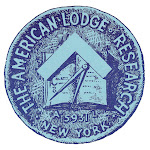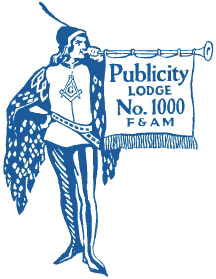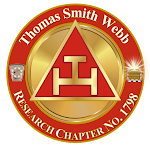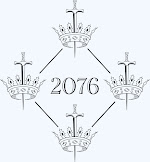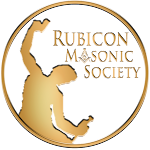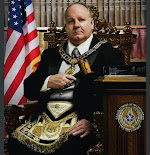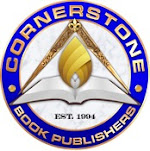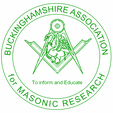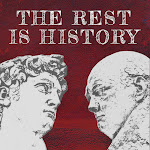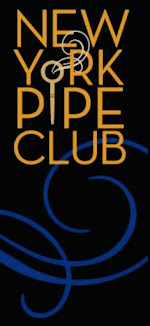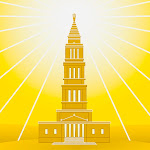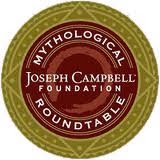Today is the Feast Day of the Four Crowned Martyrs, namesakes of the famous Quatuor Coronati Lodge 2076 in London, the first lodge of Masonic research.
Like so much in embryonic Masonic letters, the legend of the Four Crowned Martyrs vexes the reader. In short, there are competing stories about them which not only render divergent narratives, but even tell of different martyrs! What all these saints do share in common is being murdered on the orders of Emperor Diocletian. Not how you want to go.
Today, I’ll share a short piece written by one of the lodge’s first members, Bro. Adolphus Frederick Alexander Woodford, a Past Master of Lodge of Antiquity 2 and a Past Grand Chaplain of the United Grand Lodge of England. (More of his amazing biography at bottom.) This explanation of things appears in Vol. 1 of Ars Quatuor Coronatorum, the research lodge’s book of transactions for the period of 1886 to 1888. (I’ll also add that the Arundel Manuscript mentioned below has no originative connection to the Codex Arundel, Leonardo da Vinci’s writings on geometry and other subjects. However, both batches of papers were collected by the Earl of Arundel during the early seventeenth century.)
The Quatuor Coronati.
The Legend of the Quatuor Coronati is very interesting to Freemasons because in the legend, as in the Arundel MS.—a transcript of the more important portions of which follows—the Quatuor were originally four Craftsmen by name Claudius, Castorius, Simphorianus, and Nicostratus, “mirificos in arte quadrataria,” which though it is translated the “art of carving,” is literally “the stone-squarer’s art,” or the art of stone-squaring. They are distinctly called “artifices” artificers, although as the legend shows us, to the four artificers are joined four milites; whilst one Simplicius, converted to Christianity by the four during the progress of events narrated by the legend, is added to the stone-squarers, making nine in all. They are declared to have been Christians, “occulte,” secretly. Diocletian ordered an image of Æsculapius to be made, and after a contest and dialogue with “quinque Philosophi” Simphorianus, who appears to be the leader and spokesman, adds Simplicius to the number —now five—and refuses, on their behalf and with their consent, to make the image. They are brought before Lampadius the Tribune, who after reference to Diocletian, orders them to be stripped and beaten with scorpions, “scorpionibus mactari,” and then, by Diocletian’s order, they were placed in “loculi plumbei,” leaden coffins, and cast into the Tiber.
A certain Nicodemus is said to have raised the coffins and taken them to his own house; levavit says the legend.
Two years afterwards, Diocletian ordered the soldiers to pay homage to a Statue of Æsculapius, but four “Cornicularii,” or wing-leaders of the city militia, refused. They were ordered to be put to death in front of the image of Æsculapius by strokes of the Plumbata, “ictu plumbatarum,” and their bodies cast into the streets to the dogs, where they lay five days.
Then Sebastianus, with Pope Melchiades, is said to have taken up the bodies and buried them in the cemetery on the road to Lavica. By the use of the word “Arenaria,” allusion is made to the sandpits in which slaves and criminals were buried, but Christians never. But in order to conceal the catacombs from their persecutors, opening and entrances were made and used in the Arenaria to deposit the bodies of martyrs and the like in the catacombs. Here they seemed to have remained till the ninth century.
For though Melchiades appointed the day, 8th November, in the fourth century, and it is recognized as such in the Sacramentary of Gregory 200 years later, and Pope Honorius in the seventh century built a church to their especial honor, it was not until the ninth century apparently that Pope Leo translated the relics of the nine worthies to the restored and embellished church on the Cœlian Hill, now called the Church of the “Santi Cuatro Incoronati,”—Incoronati in modern Italian being identical with Coronati in mediæval and classic Latin.
It will be seen that the names have become confused as time has run on, and various appellations have been given to the four and the five. Originally the legend gives Claudius, Castorius, Simphorianus, and Nicostratus, and to these Simplicius is added. The remaining four in one of the earliest legends are said to be Severus, Severianus, Carpophorus, and Victorinus. This makes nine in all—nine worthies—concerning whom there is no reason to disbelieve, no a priori objection to, the perfect truth of the legend. Clear it is that in process of time the facts of the story itself have become a little confused and the names intermingled, but there is no doubt from very early days the four or five have been commemorated on the same one day. In one martyrology, November 8th is thus commemorated “Senas ornantes idus merito atque cruore, Claudi, Castori, Simplicii, Simphoriani, et Nichostrate pari fulgetis is luce coronæ.” One early writer terms them fratres, but whether he means fratres in blood, in confession, or fratres collegii does not clearly appear.
 |
| From Ars Quatuor Coronatorum, Vol. 1 |
As is well-known, the Sarum Missal of the 11th century gives the names as in the Arundel Hagiology, but the names vary much in different legends and service books. Some of these differences are no doubt scribal errors, and some attest remarkably the variability and the uncertainty of tradition. For instance we find Castulus, Semphorianus, Christorius, Significanus, Clemens, and Cortianus, all applied to some of the nine. In some MSS. the five are found, not the four; in some, the four are mentioned, not the five. Nothing can be decided from such mutability of the legend, or even safely argued.
In one of the Steinmetz Constitutions, they are simply described as Claudius, Christorius, and Significanus, while in the beautiful illumination from the Isabella Missal, four only appear—with the emblems of Craft Masonry one and all: the square, the plumb rule, the trowel, and the gavel—though five are mentioned in the commemoration prayer, Simphorianus, Claudius, Castorius, Simplicius, and Nichostratus. This is explained in the Arundel legend by the fact that Simplicius was not one of the original four, but being a fellow-workman and secretly desirous of becoming a Christian, he was baptized by Quirillus, the Bishop, and so suffered martyrdom with the other four.
It may be observed here, that the legend is in itself purely Italian in its inception, though it has spread probably with the Craft Lodges into Germany, Gaul, and Britain.
There are several old Acta and Gesta Quatuor Coronatorum and several special Legends, Martyrologies, and Hagiologies, of the Coronati, and the subject still requires study and illustration, as no doubt many valuable similar MSS. remain unknown and uncollated in the Vatican Library, and the greater libraries, and even private collections of MSS. To Mr. J.0. Halliwell Phillipps, the English Craft owes its introduction to this most ancient legend and valuable link between the Freemasonry of the past and the Freemasonry of the present, as contained in the “Masonic Poem.”
The Arundel Legend is taken from a fine MS. of the 12th century, in the British Museum. Its proper reference is Ar : MSS., 91, f 2186. There is another copy of the legend in the British Museum, Harleian MSS., No. 2802, f 99. There is also a short notice of the Quatuor Coronati in Regius MS., 8, c, 7 f 165, of the 14th century.
In the Harleian MS., 2082, Simphorianus is given as Simphronius; in the Regius MS., the names are as in the Arundel, but in different sequence.
In Alban Butler’s Lives, the Four Crowned Martyrs are named Severus, Severianus, Carpophorus, and Victorinus; and he adds, “five other martyrs called Claudius, Nicostratus, Symphorianus, Castorius, and Simplicius, who had suffered in the same persecution are buried in the same cemetery.” — A. F. A. Woodford
The following biography of Woodford also comes from this first AQC volume.
Rev. Adolphus Frederick Alexander Woodford, born in 1821, gazetted Christmas Day, 1838, Ensign and Lieutenant Coldstream Guards, retired in 1841, matriculated at Durham University 1842, took B.A. degree and License of Theology in 1847, and M.A. degree some years after. Ordained Deacon in 1846, curate of Whitburn, near Sunderland, 1846-47, ordained priest July 1817, and in the same year presented to the Rectory of Swillington, Leeds, which he resigned in 1872. In 1852 he was Chaplain to Sir John Lowther, Bart., as High Sheriff of Yorkshire.
Initiated in the Lodge of Friendship, Gibraltar, No. 278, in 1842, and subsequently joined the following Lodges—Marquis of Granby, Durham, No. 124, in 1842, W.M. in 1844 and 1845; Philanthropic Lodge, Leeds, No. 304, in 1854, W.M. in 1858 and 1859; and Lodge of Antiquity, London, No. 2, in 1863, D.M. in 1878, under H.R.H. the Duke of Albany. He was exalted in Concord Chapter, Durham, No. 124, in 1848; joined the Philanthropic Chapter, Leeds, No. 304, in 1863, and its first Z.; and St. James’ Chapter, London, No. 2, in 1874, Z. thereof in 1882. Appointed Provincial Grand Chaplain of Durham in 1847, Provincial Grand Chaplain, West Yorkshire, 1860, and Provincial Grand Senior Warden, 1857, and finally Grand Chaplain of England in 1863.
Was first Chairman of the West Yorkshire Charity Committee from 1859-1870. He has been a constant contributor to the Masonic press, few names being better known than “Masonic Student,” one of his many noms de plume, and was the editor of the London “Freemason” and of the “Masonic Magazine,” from 1873 to 1886; and the author of Kenning’s Cyclopoedia, “Defense of Freemasonry,” “The Sloane Manuscript,” and other works—as well as of the learned introduction to Hughan’s Old Charges of the British Freemasons.
Bro. Woodford would die in 1887, so he didn’t see AQC Vol. 1 brought to fruition. He is one of the stars of this book, having written a variety of items in its pages, including an English translation of the legend from that Arundel Manuscript’s Latin. His name probably is familiar to you Rosicrucians, as he was among the organizers of the HOGD.
In closing, I just want to explain that a big part of my laughter at the silly notion of Templar origins of Freemasonry derives from my wish for more Masons today to learn about the Four Crowned Martyrs and thereby appreciate the connection that stonemasons Claudius, Castorius, Simphorianus, and Nicostratus have to us. I’m not at all against embracing Christian history and legend, I just think what we choose to believe ought to make some sense because Masonic Templarism is fallacious.







